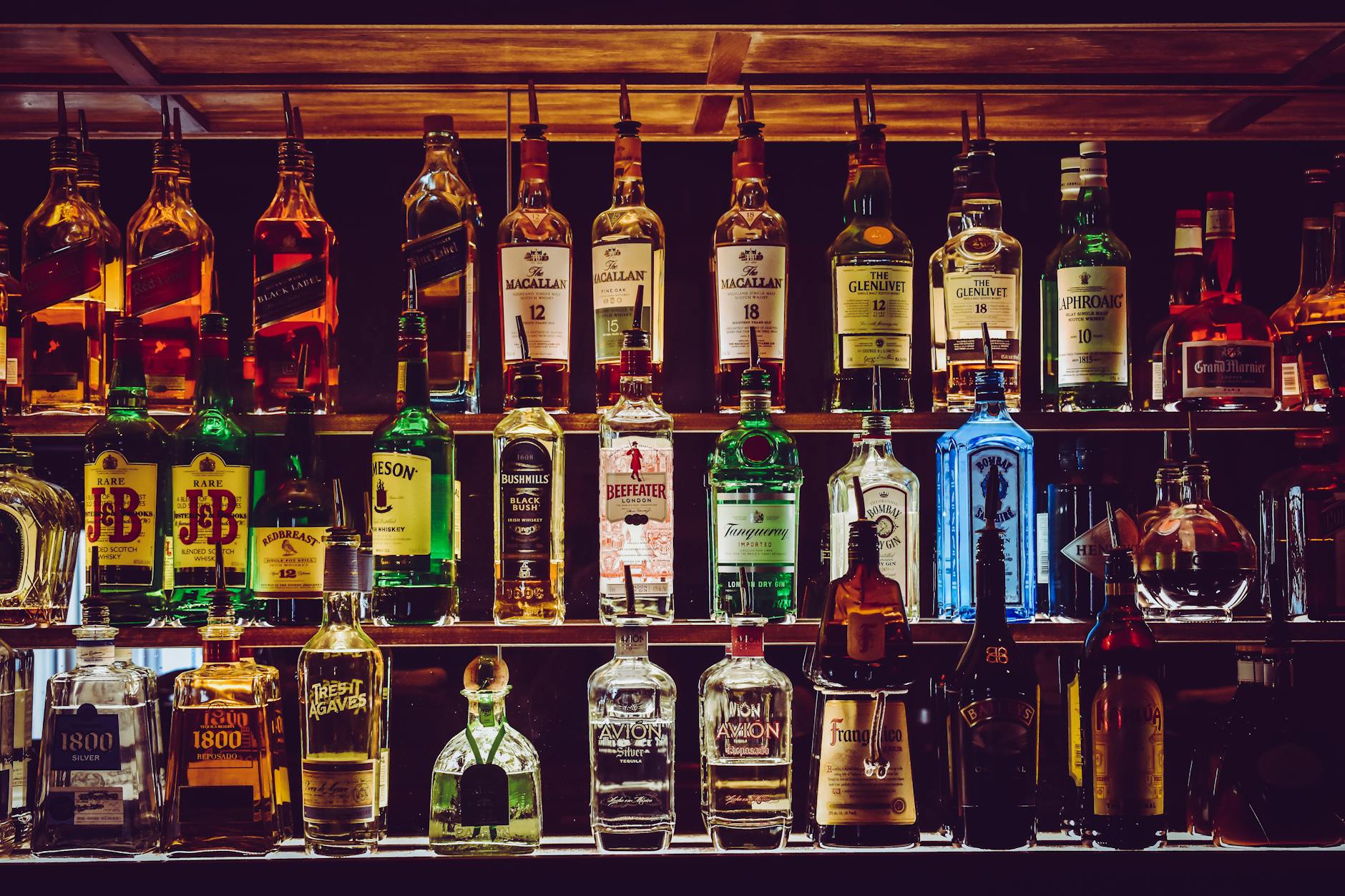The mysterious equation unraveled: Let’s uncover the baffling science behind alcohol’s tipping point to intoxication!

Image courtesy of Chris F via Pexels
Table of Contents
Have you ever wondered how many beers it takes to get drunk? It’s a question many people ponder, but the answer varies greatly from person to person. In this blog post, we will dive deep into the science behind alcohol metabolism, individual tolerance levels, and the various factors that influence intoxication.
Understanding Alcohol Metabolism
Alcohol is metabolized in the body through a process that primarily occurs in the liver. Enzymes, such as alcohol dehydrogenase, break down alcohol into acetaldehyde and then further into acetic acid. This process is what allows the body to eliminate alcohol from the system.
One of the key factors that influence how quickly alcohol is metabolized is an individual’s metabolism rate. Metabolism varies from person to person, which means that people eliminate alcohol at different speeds. This difference in metabolism plays a crucial role in how quickly someone becomes intoxicated.
Factors Influencing Intoxication
Several factors can influence how quickly or slowly someone becomes intoxicated after consuming alcohol. One significant factor is body weight. Generally, individuals with a higher body weight have higher water content, which helps dilute alcohol and reduce its effects. On the other hand, individuals with lower body weight may experience quicker intoxication.
Gender also plays a role in alcohol tolerance. Women tend to have a lower alcohol tolerance compared to men due to differences in body composition and enzyme levels. Additionally, muscle mass can impact alcohol metabolism, as muscle tissue contains more water than fat tissue, allowing for greater dilution of alcohol in the body.
Another relevant factor is the alcohol content of the beverages consumed. Drinks with higher alcohol content, such as spirits or certain craft beers, can induce intoxication faster than lower alcohol content beverages like light beers or wines.
Additionally, drinking on an empty stomach can lead to quicker absorption of alcohol into the bloodstream. Food in the stomach can slow down the absorption of alcohol, reducing its effects and giving the body more time to metabolize it.
Individual Tolerance Levels
Alcohol tolerance refers to an individual’s ability to withstand the effects of alcohol due to repeated exposure. Some individuals may have a higher tolerance, while others may have a lower tolerance based on various factors.

Image courtesy of via Google Images
Genetics play a role in alcohol tolerance. Certain gene variations can affect the way enzymes metabolize alcohol, making some people more efficient at breaking it down. Additionally, psychological factors like mindset and expectations can influence a person’s tolerance levels.
It’s important to note that alcohol tolerance can change over time. Regular drinking can impact an individual’s tolerance levels, making them more resilient to the effects of alcohol. However, this tolerance does not eliminate the risks associated with excessive drinking.
Responsible Drinking Guidelines
Understanding the science behind intoxication can empower individuals to make responsible drinking choices. The following guidelines can help you make informed decisions:
1. Know your limits: Recognize your tolerance level and understand how alcohol affects you personally.
2. Pace yourself: Avoid drinking too quickly to give your body enough time to metabolize alcohol.
3. Alternate with non-alcoholic beverages: Drink water or other non-alcoholic options between alcoholic beverages to stay hydrated and slow down alcohol consumption.
4. Eat before drinking: Having a meal before consuming alcohol can slow down its absorption and reduce the risks of over-intoxication.
5. Plan ahead: Ensure you have a safe way to get home if you plan on drinking, such as arranging for a designated driver or using rideshare services.
It’s crucial to remember that excessive drinking can have severe consequences, including impaired judgment, increased risk of accidents or injuries, and potential long-term health issues.
Conclusion
While the number of beers it takes to get drunk varies among individuals, understanding the science behind alcohol metabolism and individual tolerance levels can help us make safer and more informed decisions. Metabolism, body weight, gender, alcohol content, and individual tolerance all play significant roles in determining how alcohol affects us. By following responsible drinking guidelines, we can enjoy alcohol in moderation and prioritize our well-being. Remember: always drink responsibly and know your limits.
How many beers does it take to get drunk?
The number of beers it takes to get drunk varies greatly from person to person. Factors such as body weight, metabolism rate, and individual tolerance levels all play a role. It is important to know your own limits and drink responsibly.
What factors influence intoxication?
Several factors influence intoxication. Body weight, gender, alcohol content, and the presence of food in the stomach can all impact how quickly someone becomes intoxicated. Additionally, individual tolerance levels and metabolism rates vary and can influence the effects of alcohol.
How does alcohol metabolism work?
Alcohol is primarily metabolized by enzymes in the liver. These enzymes break down alcohol into acetaldehyde and then further into acetic acid, which is eliminated from the body. Different individuals have varying rates of alcohol metabolism, affecting how quickly they become intoxicated.
How can I drink responsibly?
To drink responsibly, it is essential to know your limits and understand how alcohol affects you personally. Pace yourself and avoid drinking too quickly. Alternate alcoholic beverages with non-alcoholic ones, eat before drinking, and plan for a safe way to get home. Always prioritize your well-being and remember the potential risks of excessive alcohol consumption.
Leave a Reply